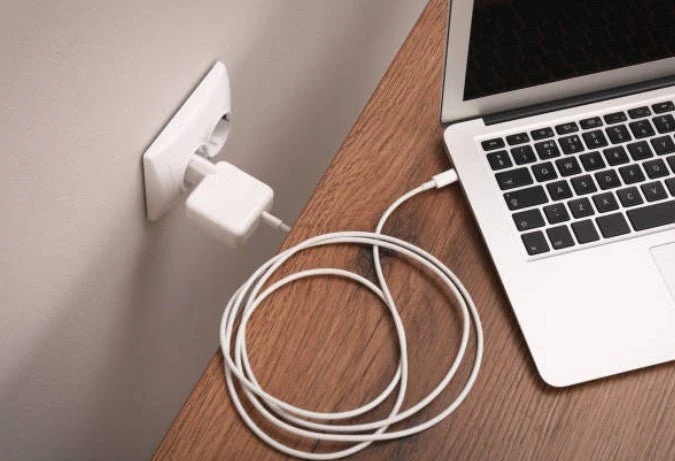
Want to know how many watts your laptop charges? Here are three ways to find out!
Table of contents

Key Insights:
• Understanding Wattage: Wattage represents the total power output of a charger. The higher the wattage, the stronger the charging capability—especially important for high-performance laptops.• How to Choose the Right Wattage: Standard laptops typically require a 45W–65W charger, while gaming or high-performance models often need 90W–300W.
• Checking Charger Wattage: You can usually find the wattage directly on the adapter’s label. Alternatively, multiply the output voltage (V) by the current (A) to calculate it yourself.
• USB-C Charging: Many laptops support charging via USB-C, especially those with Power Delivery (PD) technology, which enables faster and more efficient charging.
• Portable Charging Solutions: Power banks with an output of 60W or higher can keep your laptop powered up outdoors or on the go.
What Does Laptop Charger Wattage Mean?
Charger wattage might sound technical, but it’s actually quite simple. It measures the total amount of power a charger can supply to a device, expressed in watts (W). You can calculate it by multiplying the output voltage (volts, V) by the maximum current (amperes, A). A higher-wattage charger delivers more power, which is not only essential for high-performance laptops but also enables faster charging.It’s important to note that using a charger with lower wattage than the manufacturer recommends may result in slow charging or failure to charge altogether. On the other hand, a higher-wattage charger generally won’t damage your device, as laptops typically draw only the power they need. Therefore, when selecting a charger, always ensure its wattage meets your laptop’s specifications.
How to Determine Your Laptop’s Wattage Requirements
Laptops contain complex internal components, and devices with different performance levels have significantly different power requirements. Manufacturers design batteries and charging solutions based on a balance between battery life and performance.For example, gaming laptops—equipped with dedicated graphics cards, high-performance processors, and enhanced cooling systems—require more power and usually have larger batteries, often above 90Wh. In contrast, ultrabooks or office laptops have simpler structures, consume less power, and generally feature batteries between 50–90Wh, meaning they require less charging power.
When choosing a charger, focus on these two aspects:
1. Battery Capacity:The battery is your laptop’s “energy reservoir.” Its capacity is measured in watt-hours (Wh). A higher value means more stored energy and often requires a higher-wattage charger to refill within a reasonable time.
Laptop manufacturers usually provide custom-designed chargers. Their output wattage is typically slightly higher than the battery capacity to ensure the device can charge even under heavy workloads (e.g., gaming or rendering). Always refer to the computer’s manual or the original charger’s label for wattage information.
What if you don’t have the original charger? In such cases, you can refer to third-party accessory guides—for example, choosing a USB-C charger with Power Delivery (PD) support, a high-capacity power bank, or even a car charger. These can serve as effective alternatives for emergency or mobile use.
Common Laptop Charger Wattage Tiers:
• Standard Wattage (45W–65W):Suitable for most everyday use—ultrabooks, lightweight laptops for office work, studying, and entertainment.
• High Performance (90W–140W):
Ideal for mid- to high-end laptops with dedicated graphics cards, video editing capabilities, or those running large applications.
• Maximum Performance (200W–300W):
Designed for high-end gaming laptops and mobile workstations, meeting extreme performance demands and supporting fast charging.
How to Check Your Charger’s Wattage? Here Are 3 Practical Methods:
Method 1: Check the Adapter LabelMost chargers clearly display the output wattage (in watts, W) on the label. Look for the number followed by “W.”
If the wattage isn’t directly stated, find the output parameters (e.g., 20V/3.25A) and use the formula: Voltage × Current = Wattage (W).
If the adapter’s label is missing or illegible, search for your laptop model or the original charger model on the brand’s official website, e-commerce product pages, or trusted tech communities to find wattage information.
More and more devices now support charging via USB-C with Power Delivery (PD) technology. Mainstream USB-C PD chargers can deliver up to 100W, with some newer models supporting 140W or even higher. Not only can they power your laptop, but they can also charge other devices like phones and tablets simultaneously, greatly enhancing convenience and reducing clutter when traveling.
Friendly Tip: Always choose high-quality chargers and ensure the wattage matches your laptop’s needs. If your device supports PD, opt for a PD charger with the appropriate wattage for safe and efficient charging.
Frequently Asked Questions (FAQ):
Q: Can a 60W charger work for all laptops?A: Not necessarily. While it may be sufficient for many lightweight laptops, high-performance models often require higher wattage. Otherwise, you may experience slow charging or reduced performance under load.
A: PD is a fast-charging protocol that dynamically adjusts voltage and current to enable high-power charging. Not all USB-C chargers support PD, so always check compatibility when purchasing.
A: No. Charging speed depends on the charger’s output wattage, the laptop’s charging logic, cable quality, and even the port version.
A: Choose a charger with the same or slightly higher wattage as the original, and ensure port and protocol compatibility. For third-party chargers, select reliable brands to avoid safety risks.
